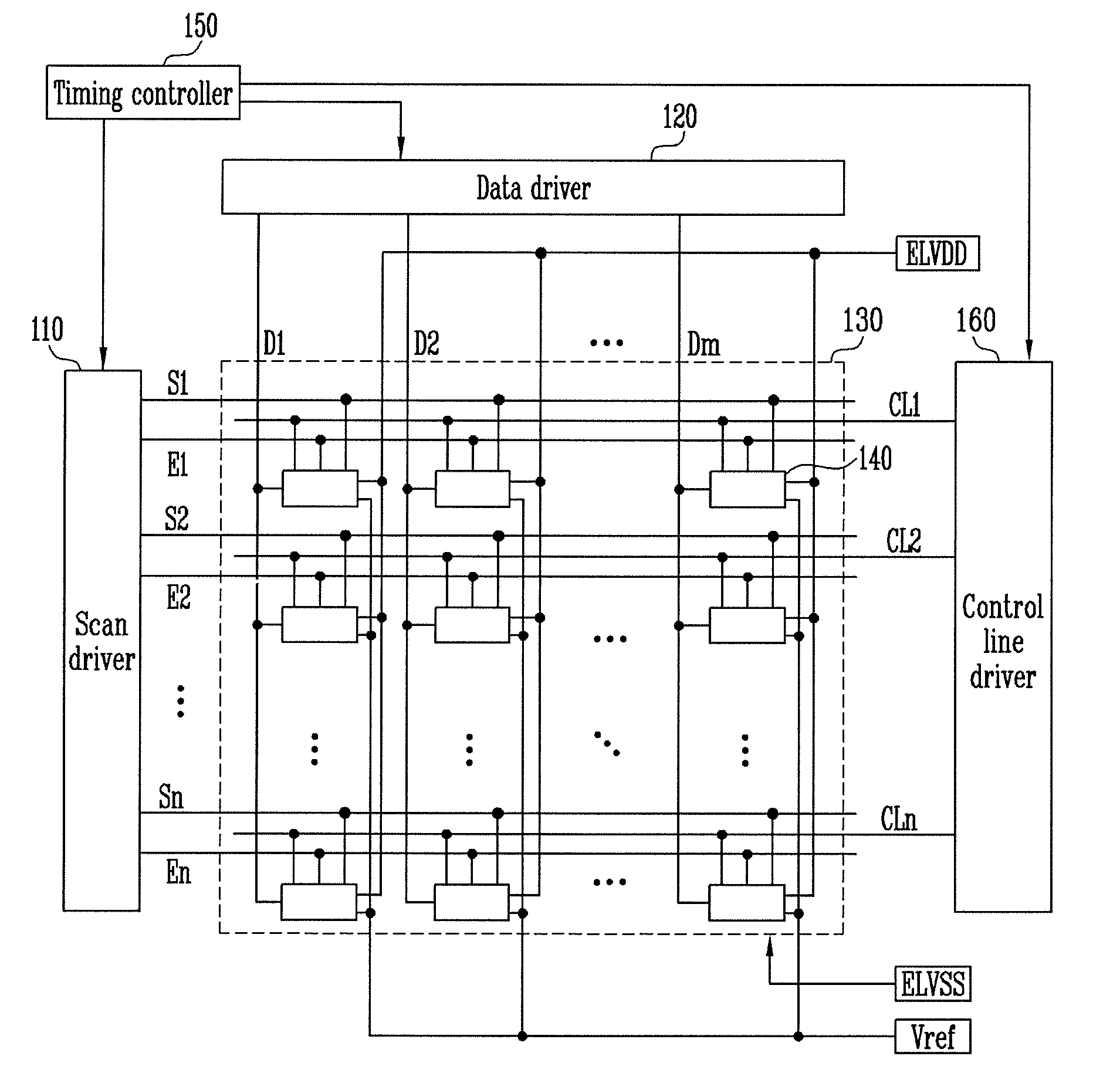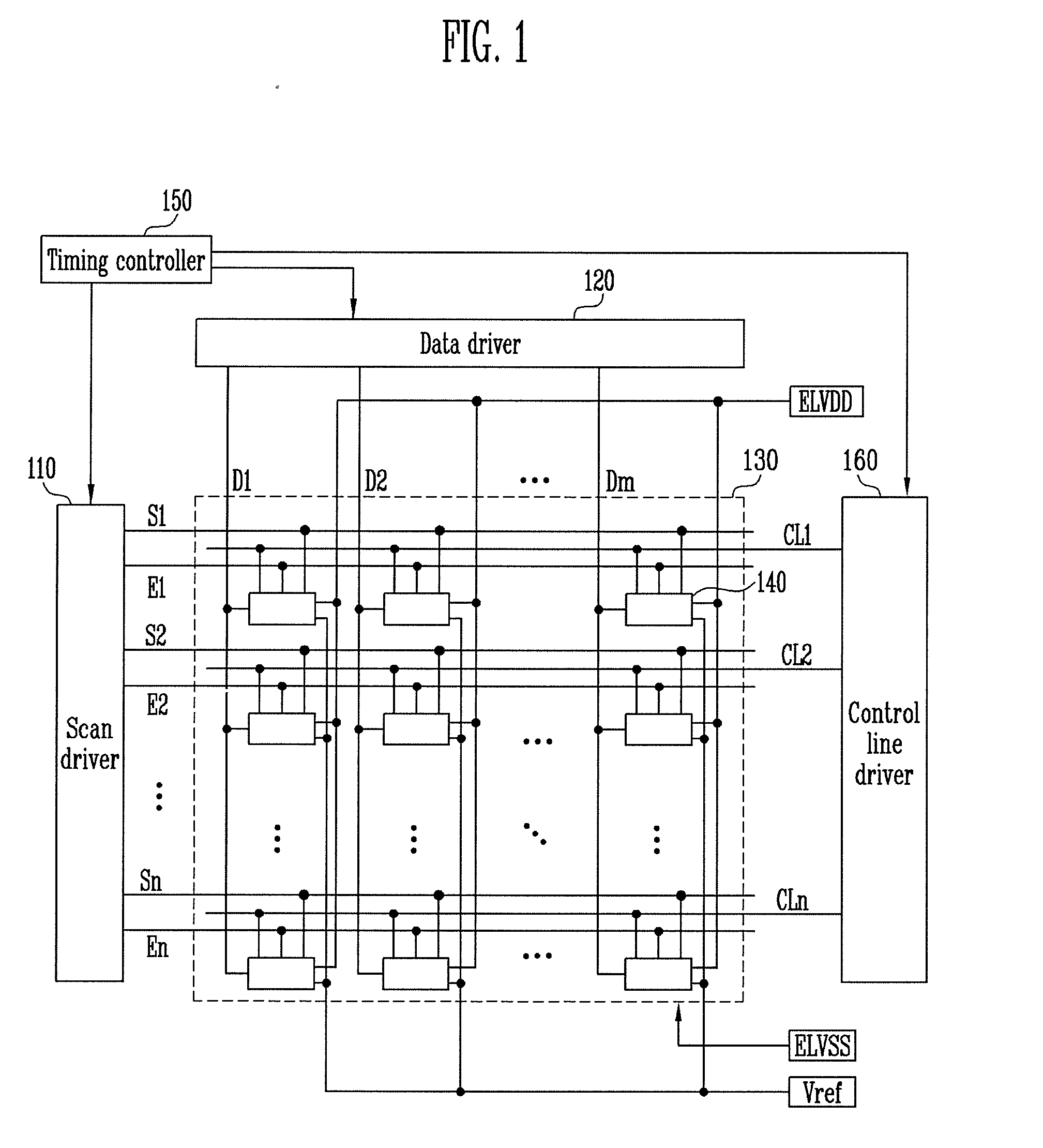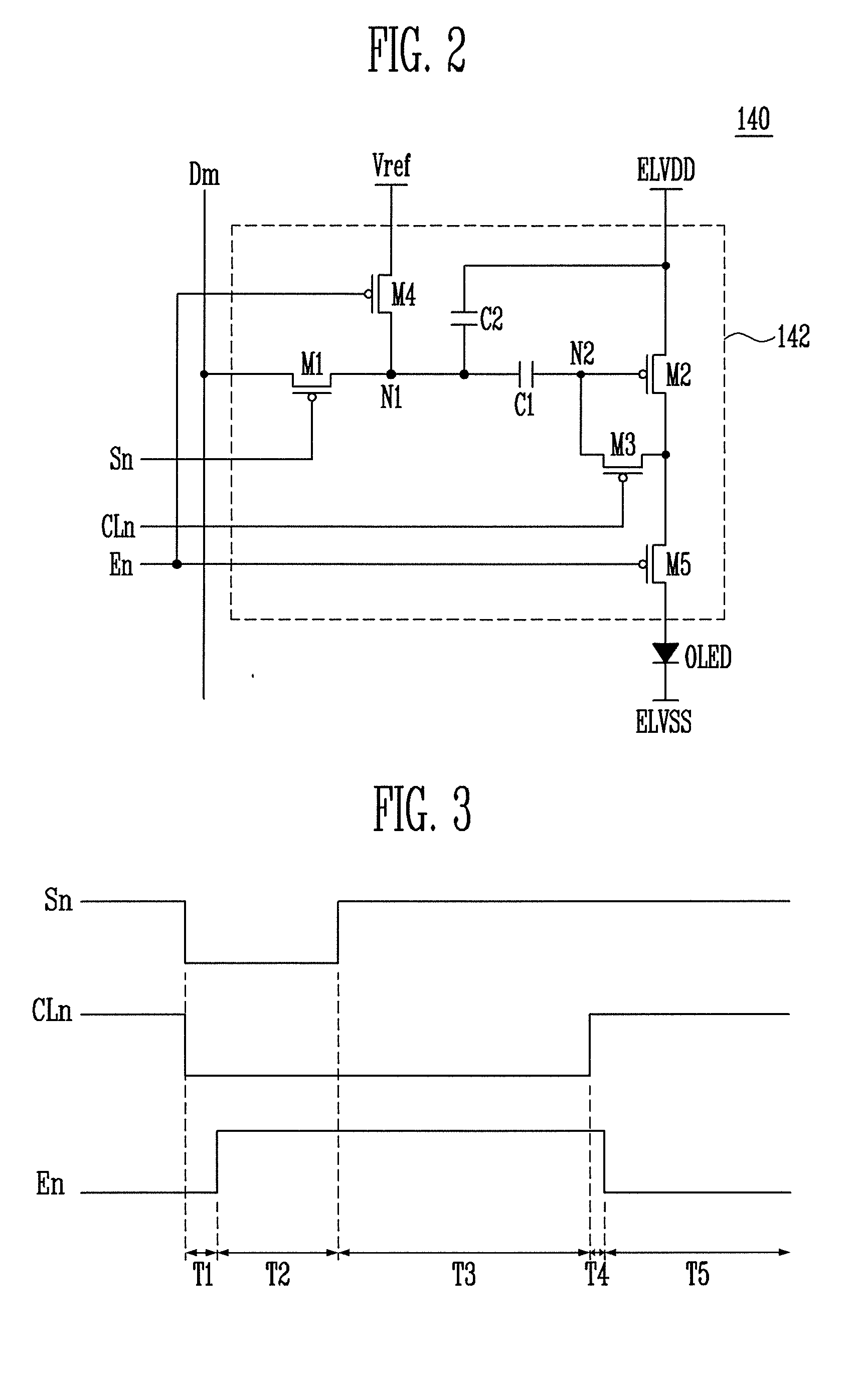Pixel and organic light emitting display device using the same
a technology of organic light, which is applied in the direction of instruments, static indicating devices, etc., can solve the problems of shortened charging duration of the threshold voltage of the driving transistor, non-uniform display, and inability to manufacture all transistors of the organic light emitting display device. achieve uniform luminance
- Summary
- Abstract
- Description
- Claims
- Application Information
AI Technical Summary
Benefits of technology
Problems solved by technology
Method used
Image
Examples
first embodiment
[0045]FIG. 2 is a circuit diagram showing a pixel shown in FIG. 1. In FIG. 2, a pixel connected to an n-th scan line Sn and an m-th data line Dm is shown for convenience of description.
[0046]Referring to FIG. 2, the pixel 140 includes an organic light emitting diode OLED and a pixel circuit 142 for controlling the amount of current supplied to the organic light emitting diode OLED.
[0047]The organic light emitting diode OLED generates light having a set or predetermined luminance to correspond to the amount of current supplied from the pixel circuit 142. For example, the organic light emitting diode OLED generates red, green, or blue light having the set or predetermined luminance to correspond to the amount of current supplied from the pixel circuit 142. An anode of the organic light emitting diode OLED is connected to the pixel circuit 142. A cathode of the organic light emitting diode OLED is connected to a power source of the second power ELVSS.
[0048]The pixel circuit 142 receive...
second embodiment
[0069]FIG. 4 is a diagram showing the pixel shown in FIG. 1. When FIG. 4 is described, the same components as those of FIG. 2 refer to the same reference numerals and a detailed description thereof will be omitted.
[0070]Referring to FIG. 4, the pixel 140 includes an organic light emitting diode OLED and a pixel circuit 142′ for controlling the amount of current supplied to the organic light emitting diode OLED. The organic light emitting diode OLED generates light having certain or predetermined luminance to correspond to the amount of current supplied from the pixel circuit 142′.
[0071]The pixel circuit 142′ receives the data signal when the scan signal is supplied to the scan line Sn and charges voltage corresponding to the threshold voltage of the second transistor M2 during the period when the control signal is supplied to the control line CLn. Compared to the pixel circuit 142 in FIG. 2, the second capacitor C2 is deleted from the pixel circuit 142′ and a sixth transistor M6, fo...
PUM
 Login to View More
Login to View More Abstract
Description
Claims
Application Information
 Login to View More
Login to View More - R&D
- Intellectual Property
- Life Sciences
- Materials
- Tech Scout
- Unparalleled Data Quality
- Higher Quality Content
- 60% Fewer Hallucinations
Browse by: Latest US Patents, China's latest patents, Technical Efficacy Thesaurus, Application Domain, Technology Topic, Popular Technical Reports.
© 2025 PatSnap. All rights reserved.Legal|Privacy policy|Modern Slavery Act Transparency Statement|Sitemap|About US| Contact US: help@patsnap.com



